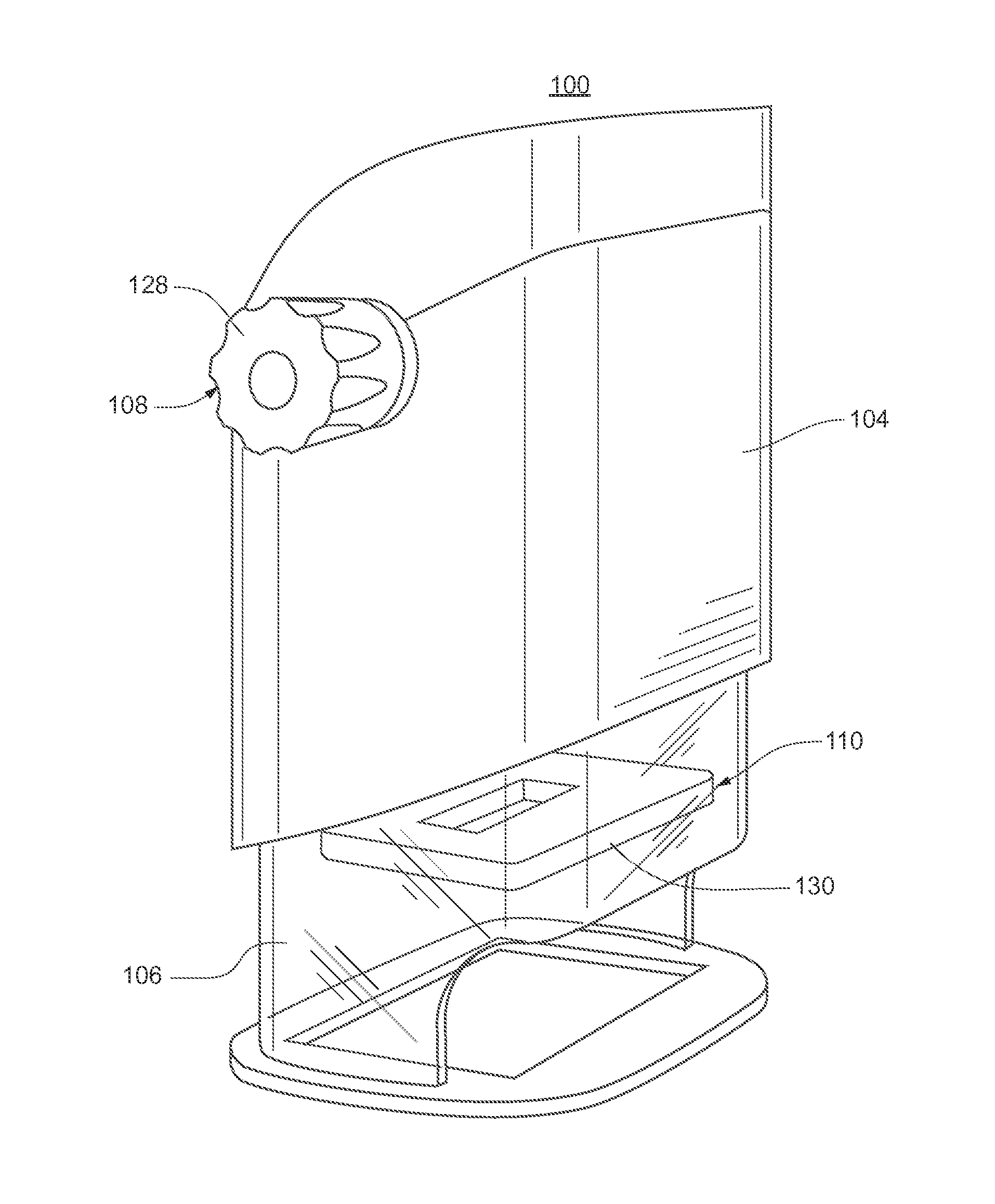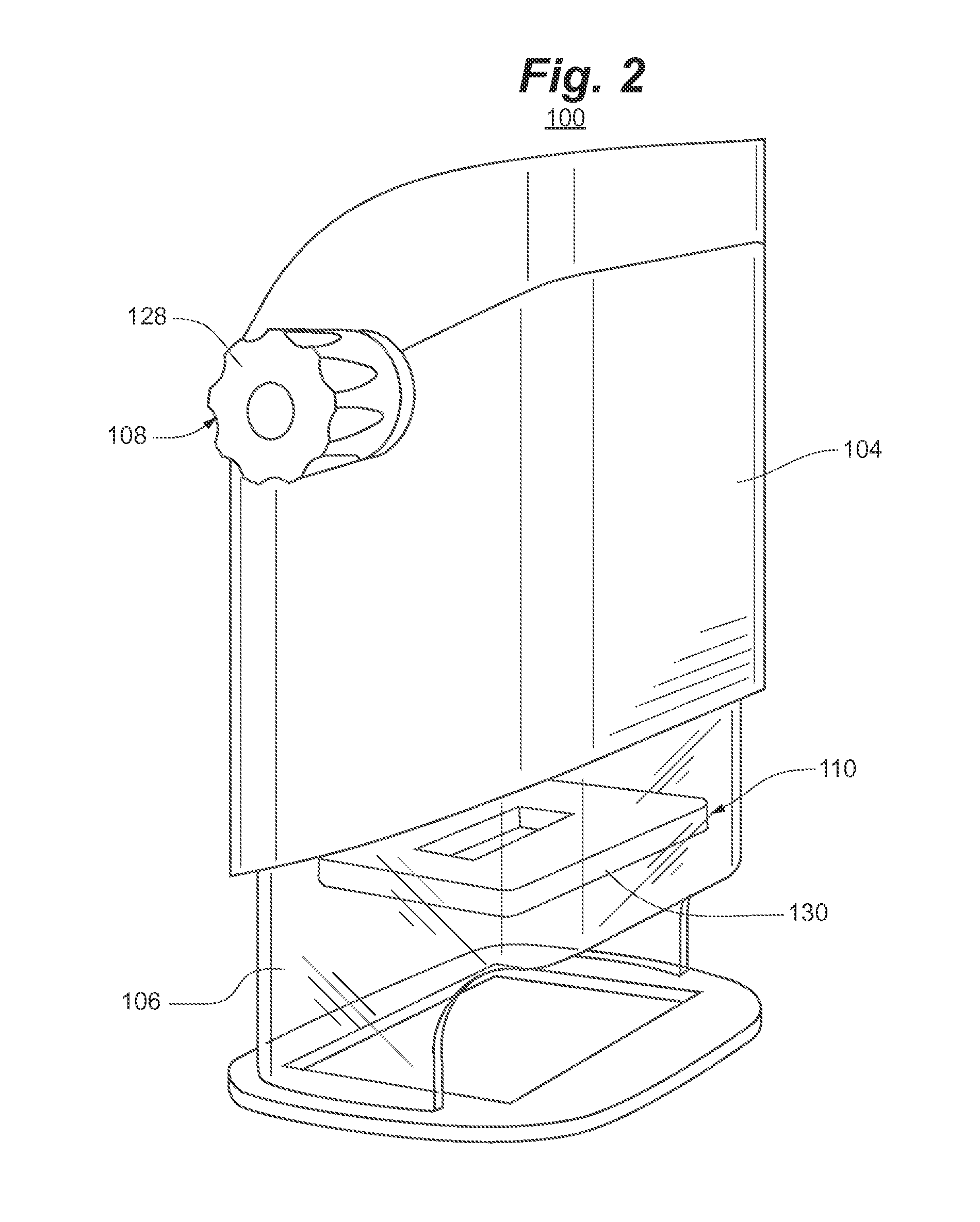Self-inking marking device
a marking device and self-inking technology, applied in the field of marking devices, can solve the problems of increasing the difficulty of adjustment, difficult and tedious, and the prior art's marking devices suffer from a myriad of problems, so as to prevent inadvertent access, protect the user from the risk of getting ink on his fingers, clothes, or other surrounding materials, and easily change the ink source
- Summary
- Abstract
- Description
- Claims
- Application Information
AI Technical Summary
Benefits of technology
Problems solved by technology
Method used
Image
Examples
Embodiment Construction
[0063]Referring generally to FIGS. 1-5, a self-inking marking or stamping device 100 according to an embodiment is depicted. Marking device 100 generally includes display interface 102, upper body 104, lower body 106, adjustment components 108, and printing components 110.
[0064]Display interface 102 comprises a month display 112, day display 114, year display 116, and optionally, a fixed or interchangeable display card 118. Month display 112 reflects the month value of the print band of months that is currently in the printing position. For example, in the embodiment depicted by FIGS. 1-5, month display 112 is “NOV” for November. Similarly, day display 114 reflects the day value of the print band(s) of days that is currently in the printing position. For example, in the embodiment depicted by FIGS. 1-5, day display 114 is “28,” reflecting the 28th day of the month. Likewise, year display 116 reflects the year value of the print band(s) of years that is currently in the printing posi...
PUM
 Login to View More
Login to View More Abstract
Description
Claims
Application Information
 Login to View More
Login to View More - R&D
- Intellectual Property
- Life Sciences
- Materials
- Tech Scout
- Unparalleled Data Quality
- Higher Quality Content
- 60% Fewer Hallucinations
Browse by: Latest US Patents, China's latest patents, Technical Efficacy Thesaurus, Application Domain, Technology Topic, Popular Technical Reports.
© 2025 PatSnap. All rights reserved.Legal|Privacy policy|Modern Slavery Act Transparency Statement|Sitemap|About US| Contact US: help@patsnap.com



